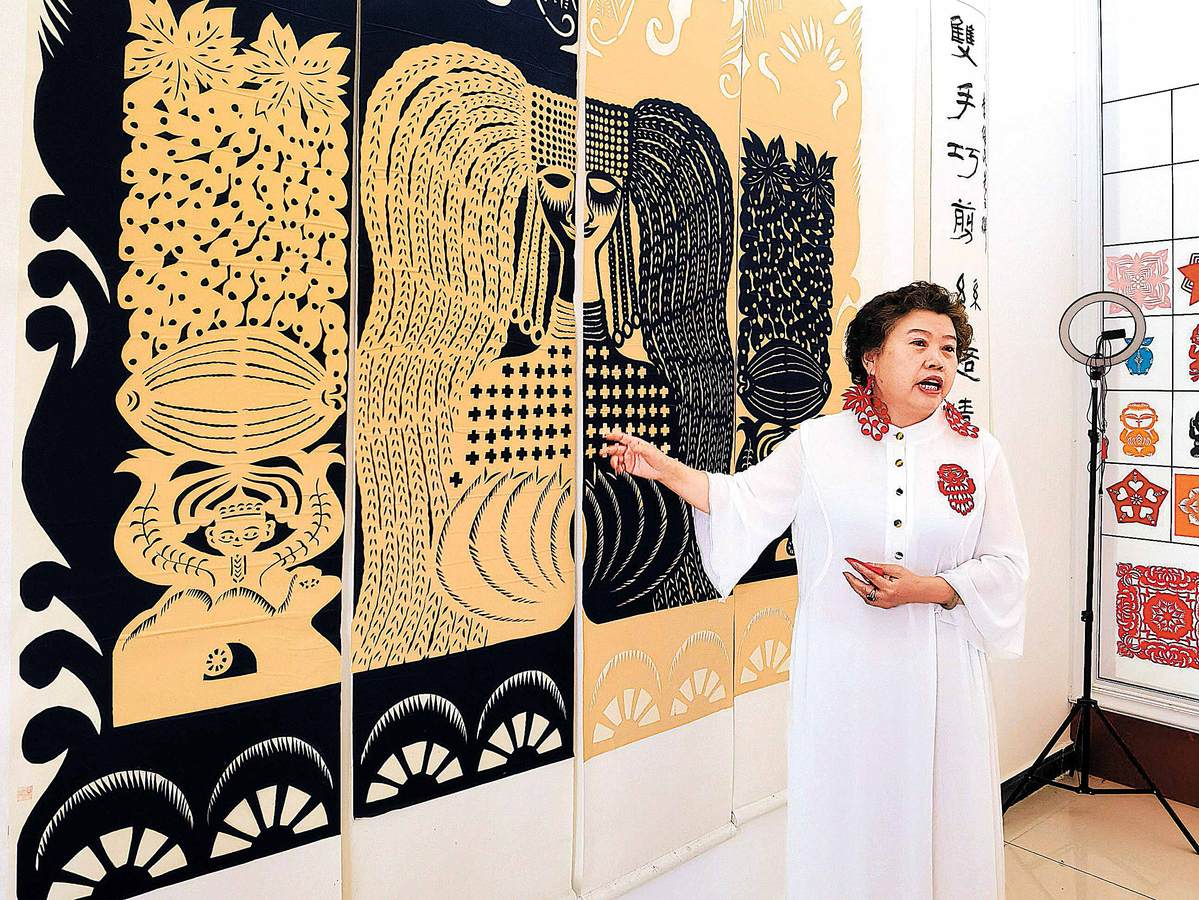Age-old art form gets new lease on life


Paper-cutting expert uses her skills and works to reflect home area's history and culture, both ancient and modern. Zhang Yi reports from Turpan, Xinjiang Uygur autonomous region.
Holding a pair of scissors in her right hand and a sheet of red paper in her left, Ji Yulan created an image of a smiling child in just five minutes.
The 53-year-old craftswoman, an inheritor of the intangible heritage of paper-cutting from the Xinjiang Uygur autonomous region, has been practicing the art form for more than 40 years.
Exquisite red paper-cut decorations stand out against her white dress, including the image of a child on her chest and two clusters of grape-shaped "earrings" that fall to her shoulders.
In 2009, the traditional Chinese folk art of using scissors or a knife to produce patterns on colored paper was included in the UNESCO Representative List of the Intangible Cultural Heritage of Humanity.
Ji was born and raised in Turpan, a city in Xinjiang where the oldest surviving paper-cut pieces (from about 1,500 years ago) were found in the 1950s. She is proud of that local history, and has brought the ancient pieces back to life by replicating them.
She formed her attachment to paper-cutting at age 7. Growing up with her grandmother in rural Turpan, Ji was deeply influenced by the old lady's fondness for the art form.
- China formulates 36 new laws since 2021
- Visitors explore Xinjiang's reclamation history at museum
- China Coast Guard fleet patrol waters off Diaoyu Islands
- Remains of 30 Chinese martyrs in Korean War returned to homeland from ROK
- Autumn harvest in full swing across China
- Belt and Road summit galvanizes grit for shaping shared future




































